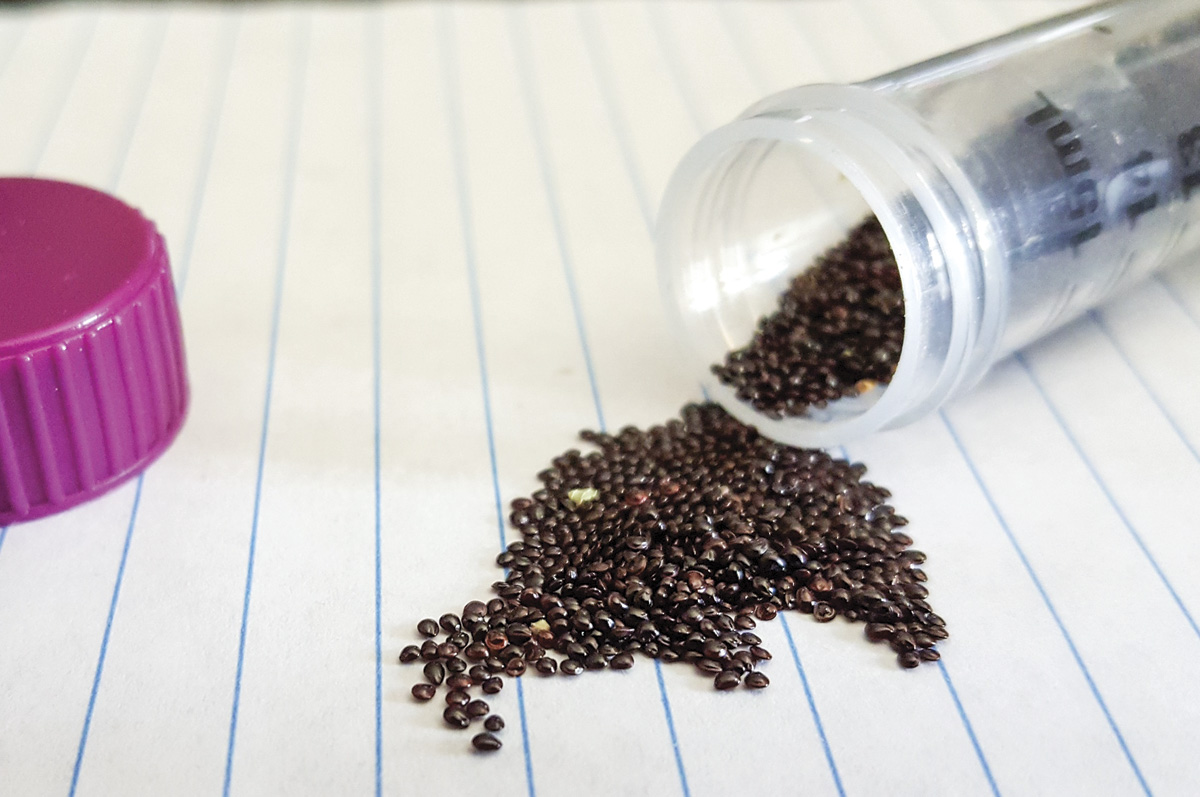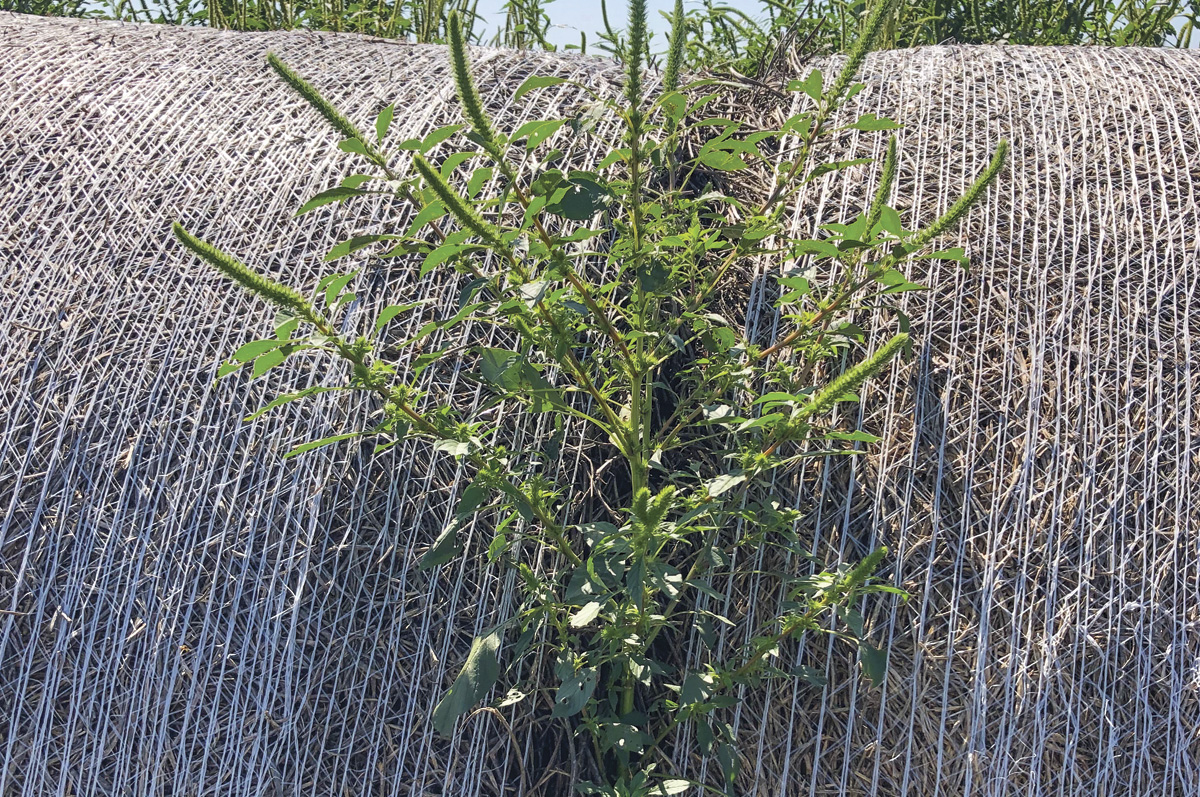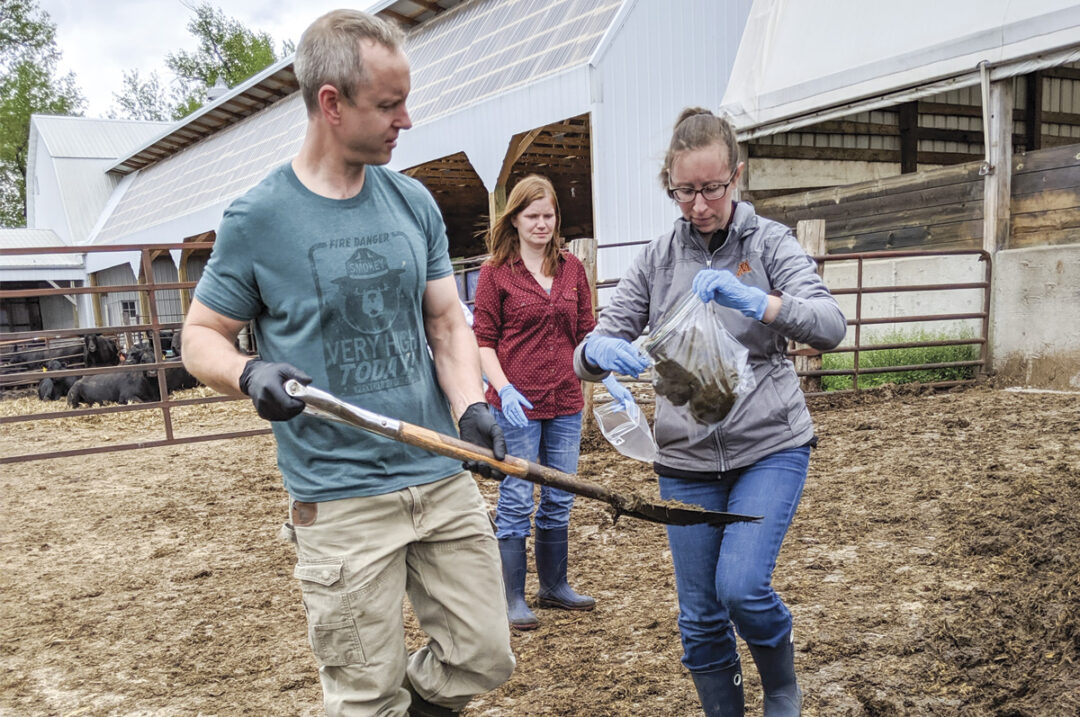A native plant in the southern states has quickly become a cause for concern across North America. Palmer amaranth is a prolific seed producer that competes with growing space for corn, soybeans and other commodities important to the dairy industry.
An unlikely risk management tool to reduce this weed’s presence in fields is proper manure handling.
“When we find Palmer amaranth on the farm, we go back and sometimes find some manure history on fields,” says Melissa Wilson, associate professor and extension specialist in manure nutrient management and water quality at the University of Minnesota. “But it’s one of those things that you can’t trace back to the source 100 percent because it likely originated from purchased feed.”
Wilson and her research team’s first project was to determine if the noxious weed could be detected in manure and then sort the seeds out of dairy waste to be properly destroyed. Once the seeds were identified as Palmer amaranth using genetic testing, the team proceeded with a multitude of techniques to effectively remove those seeds from manure. Those techniques included dry sieving, rinse sieving, manure saturation sieving with and without blending, and dispersion sieving with and without blending.
The challenge with this approach is the size of the seed. One seed is about 1 millimeter in diameter, or similar in size to a poppyseed. Additionally, one plant can contain up to 250,000 seeds.

Palmer amaranth seeds are about 1 millimeter in diameter. Photo by Anthony Brusa.
“It’s so good at spreading because it produces a massive number of seeds,” says Anthony Brusa, researcher with the department of agronomy and plant genetics at the University of Minnesota. “When you have that many seeds that are that small, they get into everything.”
Wilson’s study determined the most effective method for removing the seeds from manure was to wash and screen the manure with rinse sieving. In fact, that method recovered more than 90% of Palmer amaranth seeds regardless of manure type.
“Even though the screens were small enough to capture the seeds, we were still able to wash manure and those other mineral components through,” Wilson says.
While this process was effective in a controlled lab setting, what is the feasibility of removing Palmer amaranth seeds from manure in a commercial setting? And how can producers still use that manure as a source of nutrients in land applications?
Wilson says she believes the process can be applied in the dairy industry with commercially available liquid-solid separation systems.
“Then, we want to figure out if we could compost the solids to heat and deactivate the Palmer amaranth seeds while having the liquid cleaned and available to spread,” Wilson says. “Is that economically viable?”
For the composting process to appropriately work, the product should be about 50% moisture and reach 140ºF to 160ºF. Once that temperature is reached, the compost should be mixed and then remain untouched until that temperature is reached again.
“We do think composting can help break down those really hard-coated weed species,” Wilson says. “You want to make sure you are working with good composting conditions.”
Brusa agrees.
“It really does have to be properly composted,” he says. “It has to be at that 140 degrees for a continuous period to kill. If you don't do that, you're going to be spreading Palmer.”
Wilson and her team received funding for the compost research from the Minnesota Rapid Agricultural Response Fund. The study will begin this summer.
Evidence suggests anaerobic digestion may also help with some weed species, Wilson says.
Palmer amaranth is a native plant to northern Mexico and the southwest U.S. During the 1900s, the weed spread into the southeast region of the states. More recently, the plant has traveled northward, spreading rapidly through the Midwest and as far north as Alberta, Canada.
“The original idea was that there was this cold boundary where it couldn’t grow north,” Brusa says. “We’re finding out that it’s able to tolerate going farther north than we expected. Between that and the changing temperature bands with climate change, it’s just been continuously spreading.”

Palmer amaranth has an aggressive growth rate of 2 to 3 inches per day under good conditions. Photo by Tom Peters.
Palmer amaranth has an aggressive growth rate of 2 to 3 inches per day under good conditions, making it a threat to larger economic crops such as soybeans, corn and cotton. A USDA report indicated a 91% yield loss in corn and 79% yield loss in soybeans have been noticed in worst-case scenarios, Brusa says.
“Unfortunately, there's no silver bullet; there's no easy solution,” Brusa says. “All we can do is be on the lookout and be proactive. It’s the awareness and early detection that makes the difference.”









